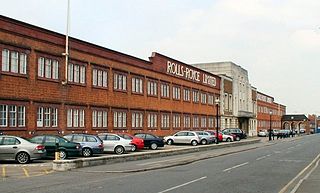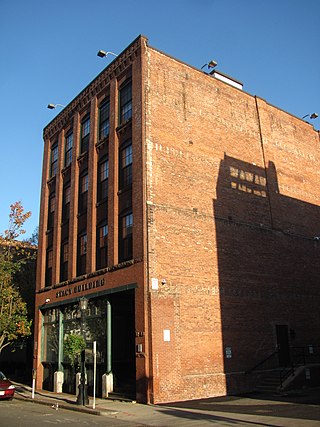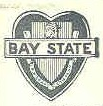
GAZ or Gorkovsky avtomobilny zavod is a Russian automotive manufacturer located in Nizhny Novgorod, formerly known as Gorky (Горький) (1932–1990). It is the core subsidiary of GAZ Group Holding, which is itself part of Basic Element industrial group. JSC Russian Machines is the controlling shareholder in OAO GAZ.
The automotive industry in the United Kingdom is now best known for premium and sports car marques including Aston Martin, Bentley, Caterham Cars, Daimler, Jaguar, Lagonda, Land Rover, Lister Cars, Lotus, McLaren, Mini, MOKE, Morgan and Rolls-Royce. Volume car manufacturers with a major presence in the UK include Nissan, Toyota and Vauxhall Motors. Commercial vehicle manufacturers active in the UK include Alexander Dennis, Ford, IBC Vehicles, Leyland Trucks and London Electric Vehicle Company.

The Brass Era is an American term for the early period of automotive manufacturing, named for the prominent brass fittings used during this time for such features as lights and radiators. It is generally considered to encompass 1896 through 1915, a time when cars were often referred to as horseless carriages.

The Duryea Motor Wagon Company, established in 1895 in Springfield, Massachusetts, was the first American firm to build gasoline automobiles.
Frigidaire Appliance Company is the American consumer and commercial home appliances brand subsidiary of multinational company Electrolux.

Charles Edgar Duryea was an American engineer. He was the engineer of the first-ever working American gasoline-powered car and co-founder of Duryea Motor Wagon Company. He was born near Canton, Illinois, a son of George Washington Duryea and Louisa Melvina Turner, and died in Philadelphia, Pennsylvania, but spent most of his life working in Springfield, Massachusetts. It was in Springfield that Charles and his brother, Frank, produced and road-tested America’s first gasoline-powered car.

Durant Motors Inc. was established in 1921 by former General Motors CEO William "Billy" Durant following his termination by the GM board of directors and the New York bankers who financed GM.

Stevens-Duryea was an American manufacturer of Veteran and Brass Era automobiles in Chicopee Falls, Massachusetts, between 1901 and 1915 and Vintage Cars from 1919 to 1927.
Framingham Assembly was a General Motors factory in Framingham, Massachusetts which opened in 1947.

Rolls-Royce Limited was a British luxury car and later an aero-engine manufacturing business established in 1904 in Manchester by the partnership of Charles Rolls and Henry Royce. Building on Royce's good reputation established with his cranes, they quickly developed a reputation for superior engineering by manufacturing the "best car in the world". The business was incorporated as "Rolls-Royce Limited" in 1906, and a new factory in Derby was opened in 1908. The First World War brought the company into manufacturing aero-engines. Joint development of jet engines began in 1940, and they entered production in 1944. Rolls-Royce has since built an enduring reputation for the development and manufacturing of engines for military and commercial aircraft.
The Herb Chambers Companies, usually shortened to Herb Chambers, is one of the largest automotive dealership in New England and is the North America's 17th largest dealer group.

The Stacy Building is a historic building at 41-43 Taylor Street in Springfield, Massachusetts, in the district of Metro Center known as the Club Quarter. On September 20, 1893, Springfielders Charles and Frank Duryea road-tested the first-ever American-built, gasoline-powered car in Springfield, which they had built at the Stacy Building. The first Duryea Motor Wagons were all built by hand at the Stacy Building on Taylor Street in Springfield. Despite the September 20 road-test on Howard Bemis's Springfield farm, the Springfield Republican newspaper did get the story until the Duryea brothers' 2nd public road-test on November 10, 1893.

The Buckeye gasoline buggy, also known as the Lambert gasoline buggy, was an 1891 gasoline automobile, the first made in the United States. It was also the first automobile made available for sale in the United States. It was initially a three-wheel horseless carriage, propelled by an internal combustion gasoline engine; it was later developed into a four-wheel automobile with a gearless transmission, and mass-produced during the first part of the twentieth century. The platform was later expanded into a line of trucks and fire engines.
This article provides an overview of the automotive industry in countries around the world.

The Brewster Building is a 400,000-square-foot (37,000 m2) building at 27-01 Queens Plaza North in Long Island City, Queens, New York City. Once an assembly plant for Rolls-Royce automobiles, Brewster automobiles, and Brewster airplanes-most notably the Brewster F2A Buffalo fighter, and the SB2A Buccaneer Light Bomber aircraft-it is now the corporate headquarters for JetBlue Airways.

The history of Springfield, Massachusetts dates back to the colonial period, when it was founded in 1636 as Agawam Plantation, named after a nearby village of Algonkian-speaking Native Americans. It was the northernmost settlement of the Connecticut Colony. The settlement defected from Connecticut after four years, however, later joining forces with the coastal Massachusetts Bay Colony. The town changed its name to Springfield, and changed the political boundaries among what later became the states of New England. The decision to establish a settlement sprang in large part from its favorable geography, situated on a steep bluff overlooking the Connecticut River's confluence with three tributaries. It was a Native American crossroad for two major trade routes: Boston-to-Albany and New York City-to-Montreal. Springfield also sits on some of the northeastern United States' most fertile soil.

The New England Westinghouse Company is a former division of Westinghouse Electric. It was founded in 1915 in East Springfield, Massachusetts. Its primary purpose was to fulfill a contract to produce 1.8 million Mosin–Nagant rifles for Czar Nicholas II of Russia during World War I. In order to produce the rifles, they purchased the J Stevens Arms & Tool Company in Chicopee Falls, Massachusetts on 1 July 1916 and acquired all its holdings which included firearms and tool manufacturing facilities, and the Stevens-Duryea automobile factory. They sold the tool manufacturing portion of Stevens and shut down production of Stevens-Duryea automobiles and civilian firearms. The remaining Stevens firearms facility was renamed the J Stevens Arms Company and its machinery was retooled to meet the Mosin–Nagant contract. After some 770,000 rifles had been produced, the Czar was deposed in March 1917. Nonetheless, the Russian Embassy in Washington, D.C. still under the direction of Provisional Government Ambassador Boris Bakhmeteff, made financial arrangements with the U.S. State Department and the U.S. Treasury Department on 20 December 1917 for National City Bank to make payments of $325,000 to the Remington Company for rifles and $2,075,000 to J.P. Morgan in connection with a Westinghouse arms contract.

The R. H. Long Motors Company was a Framingham, Massachusetts-based automobile manufacturer that operated from 1922 to 1926. They produced the Bay State model automobile, which used a Continental Motors Company six-cylinder engine.
Biddle and Smart was a manufacturer of carriages and then automobile bodies based in Amesbury, Massachusetts. It started as a successful carriage manufacturer before making the transition to auto body manufacturer in 1905.















